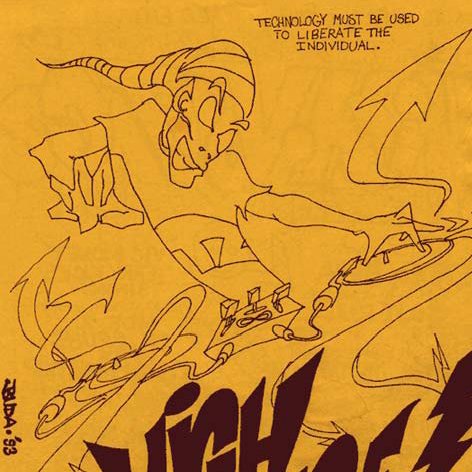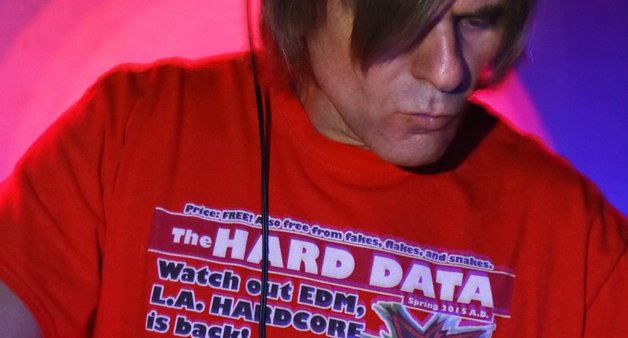Musicoin is a digital currency designed for the compensation and consumption of music. Every time a listener plays a song anywhere in the global Musicoin ecosystem, the song’s creators are paid in near real-time. The listening however, does not cost listeners anything. This article will explain how this is possible and speculate on Musicoin’s possible ramifications for music artists, fans and business people around the world.
Musicoin began as a way to address the problems associated with the current global music industry. Three corporations, Sony Music Entertainment, Warner Music Group and Universal Music Group own over 80% of the global market. Because of their power, they tend to dictate who the winners and losers are – and will be – in the global music ecosystem. New and even established musicians can suffer because of this situation. For example, many artists have complained about low royalty payments they received from streaming websites such as Spotify and Pandora. Furthermore, music copyrights and licensing are so complicated that it is difficult for the average artist to keep track of what monies they might be entitled to.

The Musicoin solution to this problem is achieved primarily with the use of blockchain technology and smart contracts. Computers around the world communicate with each other to create a digital currency called Musicoins, and then keeps track of all their transactions. This currency creation and ledger system is sequential and often referred to as a “blockchain” because the computers are processing “blocks” of transactions one after the other. Within those transactions are orders to distribute payments to one or several entities. Those payment orders are called “smart contracts” because they logically execute payment orders based on how they are programmed.
So in plain English, once a musician uploaded their song into the Musicoin system, every time their song got played they were paid 1 Musicoin. And if the musician had band members he or she needed to split the profits with, the Musicoin would get split accordingly. This all happened in seconds via the Musicoin blockchain.

So how much is a Musicoin worth? It depends. Like other digital currencies, Musicoins are traded on the open market and its value fluctuates by the minute. At times, Musicoins have been worth over 4 cents (in United States Dollars). At over 4 cents per play, Musicoin was paying artists a much higher per-stream rate than any mainstream music websites.
But with any success comes challenges. It was quickly realized that if the price of Musicoins kept climbing, no one would play music. People would hoard Musicoins hoping they would be more valuable. In fact, some were already doing that when they were worth 3 cents. So, Musicoin’s primary founder, Isaac Mao, started developing innovative strategies for the future.
Isaac had gained notoriety in China for being one of its first web-bloggers, and an advocate of internet freedom. In the early 21st century he had developed a theory called “Sharism” that emphasized the importance and necessity of sharing information in the information age. Though Sharism was already an idea that underlined Musicoin’s early incarnation of February 2017, it would now influence the Musicoin system more so than before in response to the new challenges. A controversial new implementation to the blockchain was proposed: UBI or “Universal Basic Income.”
UBI was initially controversial as it sounded like a Socialist program implemented on the blockchain. Many proponents of digital currencies are very Libertarian in outlook, and anything that resembles a welfare system, or a “Universal Basic Income” for everyone raised a lot of eyebrows. However, a closer look at UBI revealed it was far more ingenious than out-dated monetary policies.
UBI solved the problem of Musicoin hoarding first by changing the reward to the artist. One play of their song was no longer 1 Musicoin, but an amount of Musicoin equal to roughly 2 cents USD (however, that amount can fluctuate so that it would always be more than what other music streaming services pay). In this way, music plays would emit a stable reward, and people holding onto Musicoins will likely see their investment grow as the system gains wider adoption.

Next, all plays on the Musicoin system became free for the listener. The musicians are paid from a fund allocated by the computers processing the Musicoin transactions as described earlier in this article. When the computers process Musicoin transactions and make new Musicoins it is referred to as “mining”. So now, the miners of Musicoin pay the artists while the public listens for free. Far from being a social program, the UBI system arguably makes the Musicoin miners direct competitors with Universal, Sony and Warner. And who are those miners? They could be anyone with a computer and a modern graphics card. Virtually any gamer could easily mine Musicoin. So, normal people all over the world mining Musicoin are helping build a system that rewards artists and listeners in a whole new fashion. If you want to learn more about Musicoin mining, here is a good video: https://www.youtube.com/watch?v=X5-6PXfH7gw
I speak a little bit about the wider implications of UBI in this video:
The UBI system is only the beginning though. Slated for late 2018, Musicoin will introduce a new wrinkle: Proof of Sharing (though it may be renamed to “Proof of Play” as seen in this video). In this system, users actively sharing content will help mine Musicoins. For the nuts and bolts about how the Musicoin system works, read their “White Paper” which is a document outlining Musicoin’s platform design and specifications. Musicoin’s long-term vision can be found in its Roadmap document.
There are other digital currencies aimed at addressing the problems of the global music industry, but Musicoin differs from them in significant ways. Most notably is that Musicoin runs its own blockchain system, whereas other solutions ride on top of other digital currency solutions that process many different types of transactions besides just music. This makes Musicoin potentially faster and able to scale easier to a larger population of users. The other important fact is that Musicoin was the first functioning music streaming service powered by blockchain technology that could be used by artist and listener alike. Being such, it has been the first to successfully deal with real world problems and fashion solutions. In essence, Musicoin is battle tested in real-world applications.
Here are some early Musicoin milestones that have helped shape its evolution and adoption:
- Musicoin becomes the first functioning music streaming service powered by blockchain technology that can publicly accommodate musicians and listeners.
- Musicoin joins the Enterprise Ethereum Alliance, an organization made up of Fortune 500 companies, entrepreneurs, start-ups, and academics dedicated to smart contract technology.
- The Musicoin Alliance forms, as providers of goods and services join in an effort to promote the adoption of Musicoin.
- The Hard Data and Musicoin Pilot Program successfully put Musicoin in the hands of active users for music-related goods and services, namely article writing, photography, and the ability to purchase t-shirts and printed magazine subscriptions with Musicoin.
- The world’s first DJ mix powered with blockchain technology, “Rock the Blockchain” is released on Musicoin.org.
The future of Musicoin is rapidly coming to fruition. In the future we could see the Musicoin system embedded in commercial products such as speakers and headphones. Internet radio stations could stream Musicoin so that artists are paid for each listener. Web applications would easily allow the implementation of Musicoin links and streams. Soon, you may be able to buy tickets to events with Musicoin, band t-shirts, and a whole raft of goods and services normally associated with the music world. The overall effect of the Musicoin system could be artists making a decent living from fans the world over enjoying their music, and this is the world that Musicoin is helping to make.

Post script: a couple things worth mentioning is that Musicoin has an exlusive URL-shortener for Musicoin.org links, http://jam.dj and a new website administering dj mix policy for the Musicoin system has been launched, http://musicoin.dj
Also, fair disclosure in case its not obvious, The Hard Data is a big fan of Musicoin. We use it to pay our contributors, and accept it for t-shirts and magazine subscriptions. Musicoin helps fund content creation on theharddata.com. So, we are really biased when it comes to the topic of Musicoin. That said, we don’t think you will find a better music-focused digital currency and urge you to look for yourself if you don’t believe us.












